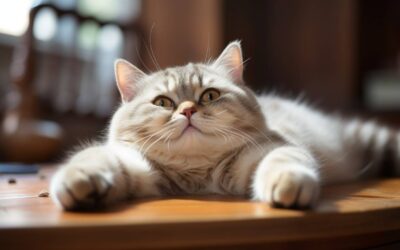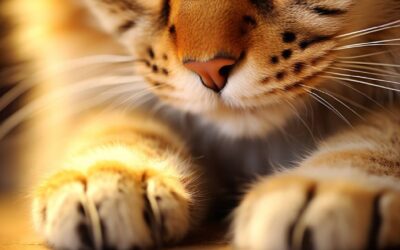Welcome to the world of feline nutrition, where cats’ curiosity knows no bounds. One of the questions that often arises in cat owners’ minds is, “Can cats have collard greens?”
In this comprehensive guide, we will explore collard greens’ safety for cats, health benefits, and potential risks associated with cats consuming collard greens. If you’ve ever considered sharing your leafy greens with your furry friend, you’ve come to the right place.
Can Cats Eat Collard Greens?
The simple answer is yes, cats can eat collard greens in moderation. These leafy greens can be a source of various nutrients that contribute to your cat’s overall well-being. However, it’s essential to understand the dos and don’ts to ensure your pet’s health and safety.
Are Collard Greens Safe for Cats?
Collard greens, like many other vegetables, are not inherently toxic to cats. They are a good source of vitamins, minerals, and fiber. However, ensuring they are safe for your furry companion is crucial.
The Health Benefits of Collard Greens for Cats
Collard greens, like other leafy greens, can offer several health benefits when incorporated into your cat’s diet. Here are some of the advantages of including collard greens in your cat’s nutrition:
Rich in Vitamins
Collard greens are packed with essential vitamins, such as A, C, and K. These are crucial for maintaining your cat’s overall health, supporting their immune system, and aiding in proper growth and development.
Mineral Abundance
Collard greens are a good source of important minerals like calcium and magnesium. Calcium is essential for strong bones and teeth, while magnesium plays a role in muscle function and energy production.
Fiber for Digestion
The fiber content in collard greens can contribute to healthy digestion for your cat. It can help prevent constipation and support regular bowel movements.
Antioxidant Properties
Collard greens contain antioxidants, including beta-carotene and flavonoids, which can help protect your cat’s cells from damage caused by free radicals.
Hydration
Collard greens have a high water content, which can help keep your cat hydrated. Proper hydration is essential for kidney function and overall health.
Weight Management
These greens are low in calories and fat, making them a suitable addition to your cat’s diet if they need to maintain or lose weight.
Eye Health
The vitamin A in collard greens is beneficial for maintaining good eyesight and preventing eye disorders.
Immune System Support
The vitamins and antioxidants in collard greens can help boost your cat’s immune system, making them more resilient to illnesses.
Anti-Inflammatory Effects
Some studies suggest that the compounds in collard greens may have anti-inflammatory properties, which can benefit cats with certain health conditions.
Better Coat and Skin
The nutrients in collard greens can contribute to a shinier coat and healthier skin, making your cat look and feel their best.

Risks of Feeding Collard Greens to Cats
Oxalates
Collard greens contain oxalates, which can interfere with calcium absorption and potentially lead to kidney issues in cats, especially if consumed in large quantities.
Digestive Upset
Some cats may have sensitive stomachs and experience digestive problems like diarrhea or vomiting when introduced to new foods like collard greens.
Allergies
Like humans, cats can develop allergies to certain foods, including collard greens. Allergic reactions can vary from mild to severe.
Pesticides and Contaminants
If not properly washed and prepared, collard greens may contain pesticides or contaminants that could harm your cat. Always wash them thoroughly.
Interference with Medications
Collard greens might interact with certain medications your cat is taking. Consult with your vet if your cat is on any medications.
To mitigate these risks, it’s crucial to introduce collard greens gradually into your cat’s diet and monitor their reactions. Always consult with your veterinarian before making significant changes to your cat’s food.

Preparing Collard Greens for Cats
Follow next steps:
Wash Thoroughly
Start by washing the collard greens thoroughly to remove any pesticides, contaminants, or dirt. Use cool, clean water to rinse them.
Remove Tough Stems
Cats can have difficulty digesting the tough stems of collard greens. Remove these, leaving the softer, leafy parts.
Steam or Cook
Collard greens are more easily digestible for cats when lightly steamed or cooked. Avoid using seasonings, spices, or oils in the preparation, as these can harm your cat.
Cut into Small Pieces
After steaming or cooking, cut the collard greens into small, bite-sized pieces. This makes it easier for your cat to eat and reduces the risk of choking.
Serve in Moderation
As with any new food, start by offering a small amount of collard greens to your cat. Observe their reaction and adjust the quantity based on their tolerance.
Mix with Cat Food
You can mix collard greens with their regular cat food to make them more appealing to your cat. This can help with the transition.
Conclusion
Collard greens can be a nutritious addition to your cat’s diet when introduced cautiously. While they offer various health benefits, balancing their consumption is crucial to avoid potential risks.
Consult with your veterinarian for personalized advice on incorporating collard greens into your cat’s menu, and remember that, ultimately, a happy and healthy cat is the ultimate goal of any dietary choice.

FAQs
Do cats need greens in their diet?
Cats are obligate carnivores, meaning their primary diet should be animal-based proteins. While greens are not a dietary necessity, they can offer some health benefits when introduced in moderation.
What other greens should cats eat?
Other safe greens include spinach, kale, and broccoli, but always introduce them slowly and monitor your cat’s reaction. Avoid toxic plants like onions, garlic, and chives, which should never be part of your cat’s diet.
Why does my cat eat greens?
Cats may eat greens as an instinct to aid their digestion. The fiber in greens can help them regurgitate hairballs or aid in the digestive process. Some cats also enjoy the taste and texture of greens, making it a harmless dietary choice.
Can cats have collard greens daily?
While cats can eat collard greens, it’s not advisable to make them a daily staple. Occasional consumption, perhaps once a week, in small, well-prepared portions is a safer approach.
How do I prevent my cat from overeating collard greens?
To prevent overconsumption, ensure that the collard greens are a small portion of their meal rather than the main course. Monitor your cat’s reaction to greens, and if they experience any digestive problems, reduce the amount or frequency of green intake.






Collard greens for cats? Intriguing! My cat is a curious eater. Anyone tried this with their feline friend? 🌿😺
my cat does not even look at them he is only interested in the meat